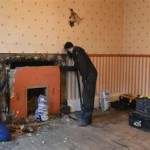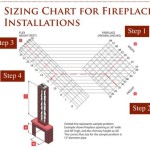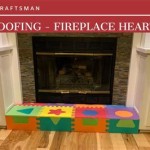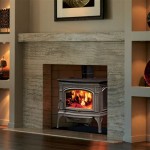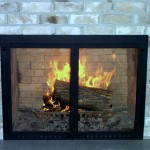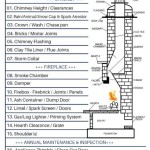How To Build A Natural Stone Fireplace
A natural stone fireplace offers a timeless and aesthetically-pleasing focal point for any room. Incorporating natural stone into fireplace construction provides not only visual appeal but also durability and inherent thermal mass, which helps retain and radiate heat. Building a natural stone fireplace is a complex undertaking that requires meticulous planning, a solid understanding of masonry techniques, and adherence to local building codes.
This article details the step-by-step process involved in constructing a natural stone fireplace, covering essential pre-construction considerations, fundamental construction techniques, and important safety measures.
Planning and Preparation
Before commencing any physical construction, thorough planning and preparation are essential for a successful natural stone fireplace project. Neglecting this phase can lead to costly errors, structural instability, and potential safety hazards.
1. Design and Dimensions: Determine the desired dimensions and design of the fireplace. Sketching a detailed plan, including the height, width, and depth of the firebox, chimney, and overall structure is crucial. Consider the existing architectural style of the room and choose a stone type that complements the surrounding décor. Common stone choices include fieldstone, limestone, river rock, and slate. Each type possesses unique characteristics in texture, color, and shape, influencing the overall aesthetic of the fireplace.
2. Building Codes and Permits: Research and comply with all local building codes and regulations related to fireplace construction. Obtain the necessary permits before starting any work. These codes typically specify requirements for firebox dimensions, chimney height, clearances from combustible materials, and other safety-related aspects. Consult with local building officials to ensure the design meets all regulatory requirements.
3. Foundation: A stable and properly constructed foundation is paramount for supporting the weight of a natural stone fireplace. The foundation should extend below the frost line to prevent movement caused by freezing and thawing cycles. It should also be sized appropriately to distribute the weight of the fireplace evenly across the soil. Typically, a concrete slab foundation reinforced with steel rebar is required. The slab should be level and slightly larger than the base of the fireplace.
4. Firebox and Chimney System: The firebox is the central element of the fireplace, where the fire burns. It must be constructed of fire-resistant materials such as firebrick. The chimney serves to vent smoke and combustion gases safely out of the building. It should be properly sized to ensure adequate draft and prevent backdrafting. The chimney system typically includes a flue liner, which is a clay or metal pipe that extends from the firebox to the top of the chimney. The flue liner protects the chimney structure from the corrosive effects of combustion gases. Prefabricated fireboxes and chimney systems can simplify the construction process and ensure code compliance.
5. Material Acquisition: Calculate the quantity of materials required based on the design and dimensions of the fireplace. Order the necessary materials, including natural stone, firebrick, mortar, flue liner, cement, sand, gravel, rebar, and any other specialized components. Ensure the stone is clean and free of debris before starting construction. Store the materials in a dry and accessible location.
Construction Techniques
Once the planning and preparation phase is complete, the actual construction process can begin. This phase requires careful attention to detail, precise masonry skills, and adherence to safety precautions.
1. Foundation Construction: Excavate the area for the foundation to the required depth. Pour a layer of gravel for drainage and compaction. Install steel rebar reinforcement according to engineering specifications. Pour concrete into the excavation and screed it level. Allow the concrete to cure for the recommended time period before proceeding. A properly cured foundation provides a solid and stable base for the fireplace.
2. Firebox Construction: Begin constructing the firebox using firebrick and fire-resistant mortar. Lay the firebrick in a running bond pattern, ensuring each brick is properly aligned and mortared. The dimensions of the firebox should comply with local building codes. Incorporate a damper mechanism to control airflow and prevent drafts when the fireplace is not in use. The damper should be easily accessible and adjustable. Ensure the firebox is level and plumb throughout the construction process.
3. Chimney Construction: Install the flue liner inside the chimney. The flue liner should be properly sized to match the firebox opening. Build the chimney structure around the flue liner using brick or stone. Mortar each stone or brick securely in place. Maintain a consistent mortar joint thickness throughout the chimney construction. Ensure the chimney is plumb and square. The chimney should extend at least three feet above the highest point of the roof to ensure adequate draft. A chimney cap should be installed to prevent rain, snow, and debris from entering the chimney. Follow the manufacturer's instructions for installing the flue liner and chimney components.
4. Stone Veneer Application: Apply a layer of mortar to the firebox and chimney structure. Select stones of varying sizes and shapes to create a natural and aesthetically pleasing appearance. Apply mortar to the back of each stone and press it firmly against the prepared surface. Ensure the stones are properly aligned and interlocked. Use shims to hold the stones in place until the mortar sets. Point the mortar joints between the stones using a pointing tool. Clean any excess mortar from the surface of the stones. Allow the mortar to cure completely before exposing the fireplace to fire.
5. Hearths and Surrounds: Construct a hearth in front of the firebox to protect the flooring from sparks and embers. The hearth should extend at least 16 inches in front of the firebox opening and 8 inches on each side, according to most building codes. The hearth can be constructed of stone, brick, or tile. Install a surround around the firebox to provide a decorative finish. The surround can be made of wood, stone, or metal. Ensure the surround is properly secured to the fireplace structure.
Safety Considerations
Safety is a paramount concern during the construction and operation of a natural stone fireplace. Adherence to safety guidelines can prevent accidents, injuries, and property damage.
1. Fire Safety: Maintain adequate clearances from combustible materials. Ensure the fireplace is properly ventilated. Never leave a fire unattended. Use a fireplace screen to prevent sparks from escaping. Have the chimney inspected and cleaned regularly to prevent creosote buildup. Install smoke detectors and carbon monoxide detectors in the vicinity of the fireplace.
2. Structural Integrity: Ensure the foundation is properly constructed and capable of supporting the weight of the fireplace. Use high-quality materials and construction techniques. Follow local building codes and regulations. Consult with a qualified structural engineer if necessary. Regularly inspect the fireplace for signs of damage or deterioration.
3. Personal Protective Equipment: Wear appropriate personal protective equipment (PPE) during construction, including safety glasses, gloves, and a dust mask. Use caution when lifting heavy stones. Work in a well-ventilated area. Avoid working alone. Have a first-aid kit readily available.
4. Mortar and Cement Safety: Mortar and cement can cause skin irritation and burns. Wear gloves and eye protection when handling these materials. Avoid prolonged contact with skin. Wash thoroughly with soap and water after handling mortar or cement. If mortar or cement gets into your eyes, flush immediately with water and seek medical attention.
5. Tool Safety: Use power tools safely and according to the manufacturer's instructions. Wear safety glasses when using power tools. Keep the work area clean and organized. Disconnect power tools from the power source before making adjustments or repairs. Never use damaged or malfunctioning tools.
Building a natural stone fireplace is a significant undertaking that requires careful planning, skillful execution, and unwavering attention to safety. While the process can be challenging, the resulting fireplace will provide warmth, beauty, and lasting value to any home.
The successful construction of a natural stone fireplace is dependent on adherence to local building codes, the use of appropriate materials, and the application of sound masonry techniques. Prioritizing planning and safety throughout the project is crucial for ensuring a durable and aesthetically pleasing finished product.

How To Build An Outdoor Stacked Stone Fireplace

Stonetutorials Living Stone Masonry

Diy Fireplace Stone Surround Natural Hearth Installation

Build A Stone Fireplace Resources To Help You Stack It Up Outdoors

Thin Stone Veneers Make A Fireplace Update Easy Swenson Granite 100 Natural Stones

Stonetutorials Living Stone Masonry

How To Build A Homemade Fieldstone Fireplace Homesteady Stone S Natural Fireplaces Rustic

Diy Fireplace Stone Surround Natural Hearth Installation

Build A Stone Fireplace Resources To Help You Stack It Up Outdoors

How To German Smear A Dated River Rock Fireplace Krista Gilbert
Related Posts

